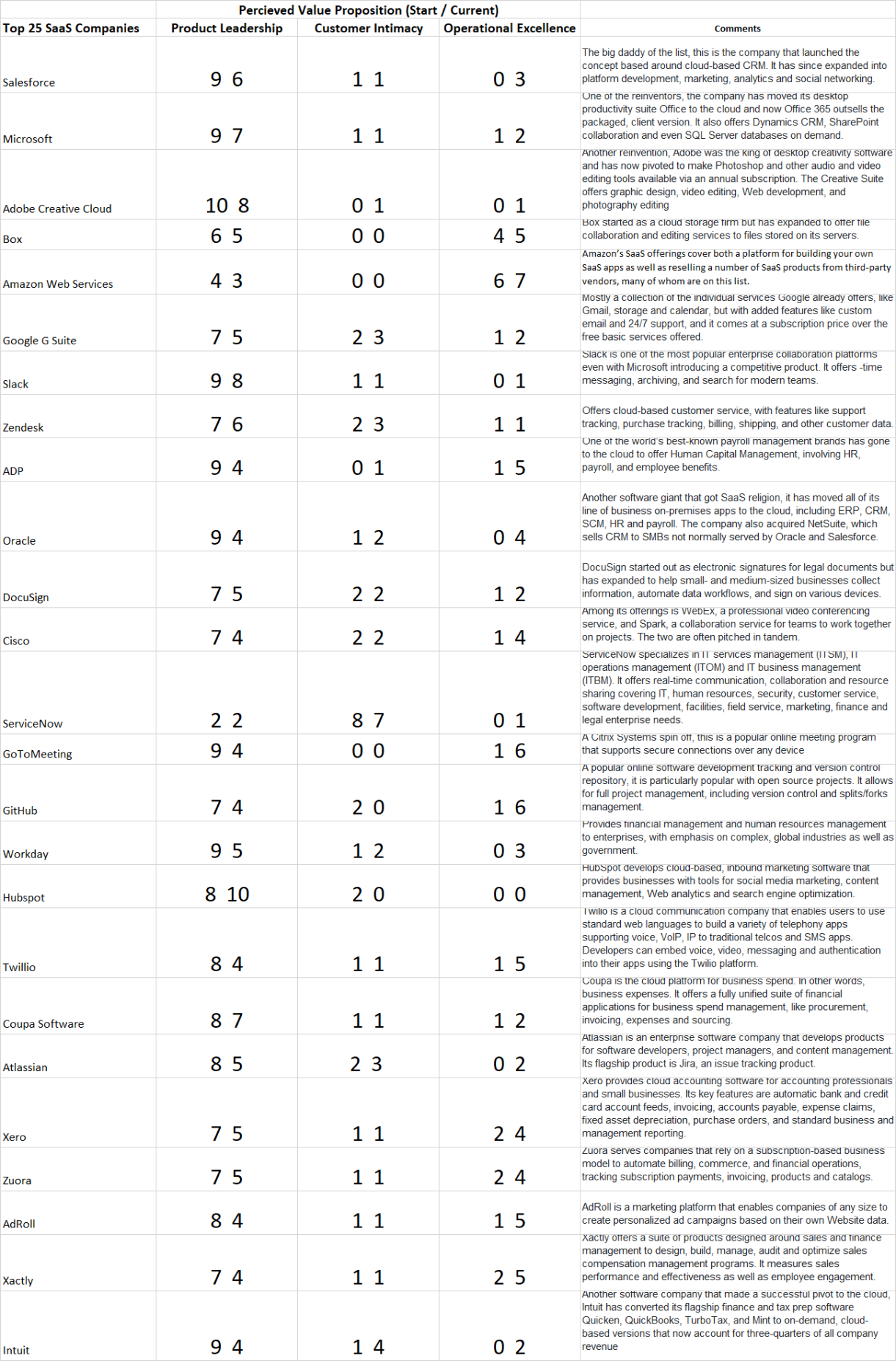In the pursuit of perpetual learning and development about the important topic of Business Acumen,  a question from one of our Software as a Service (SaaS) clients recently came our way: “Are there any patterns or observations we can make from a strategy perspective that we can learn from to make our business and skills better?”
a question from one of our Software as a Service (SaaS) clients recently came our way: “Are there any patterns or observations we can make from a strategy perspective that we can learn from to make our business and skills better?”
To answer the question, I started with an analysis of the top 25 SaaS companies in the US to try to determine any patterns, archetypes, or other data points in support of understanding key lessons. The assessment included reviewing the companies on the list in terms of:
- Their websites
- Mission statements and vision statement
- Investor presentations (if available)
- Marketing materials
From my review, I then took my best, educated guess as to the value proposition from two perspectives:
- The value proposition when the company was started
- The value proposition today after the strategy has evolved and reacted to competitive and customer dynamics
Using the same scoring system that Advantexe utilizes when we ask participants to choose a strategy in our business simulations, I used 10 points and allocated across Product Leadership, Customer Intimacy, and Operational Excellence.
Key Discoveries
There were definitely patterns and key learnings. One of the biggest surprises is how new most of the companies are and how strong the “survivors” are. For example, #ADP which is really the original, disruptive SaaS company is stronger and more innovative today than they were in 1957 when Frank Lautenberg invented the SaaS model.
Summary of findings:
1) A significant majority (92%) of all SaaS companies start out with strong Product Leadership and then evolved to more Operational Excellence when they started to scale.2) Only a small minority (20%) of the companies on his list are “legacy” companies that started many years ago as traditional software product companies and have evolved into SaaS companies. These companies include:
- Microsoft
- Adobe
- ADP
- Oracle
- Intuit
3) The Product Leadership strategy is typically very strong in the beginning, but then over time innovation and product quality becomes just a basic standard. It is hard and rare to maintain the highest levels of unique, disruptive, and continuous innovation.
4) Only one company on the list, Amazon Web Services, started out with a completely Operational Excellence strategy and they have not changed that strategy.
5) When evolving to more scalability and Operational Excellence, the Operational Excellence score never is higher than the Product Leadership score; there seems to be an equilibrium between core Product value and core Operational Excellence value.
6) Only one company on the list, ServiceNow, started out as and is still Customer Intimate
The List- Scores and Comments

Conclusions
As existing companies migrate their business strategies and as new companies enter the markets utilizing SaaS models, the approach to choosing and executing strategy is changing. The conclusion here is that there has to be an equilibrium between maintaining innovation and creating scalability that will drive revenues, profits, customer experience, and ultimately shareholder value.




